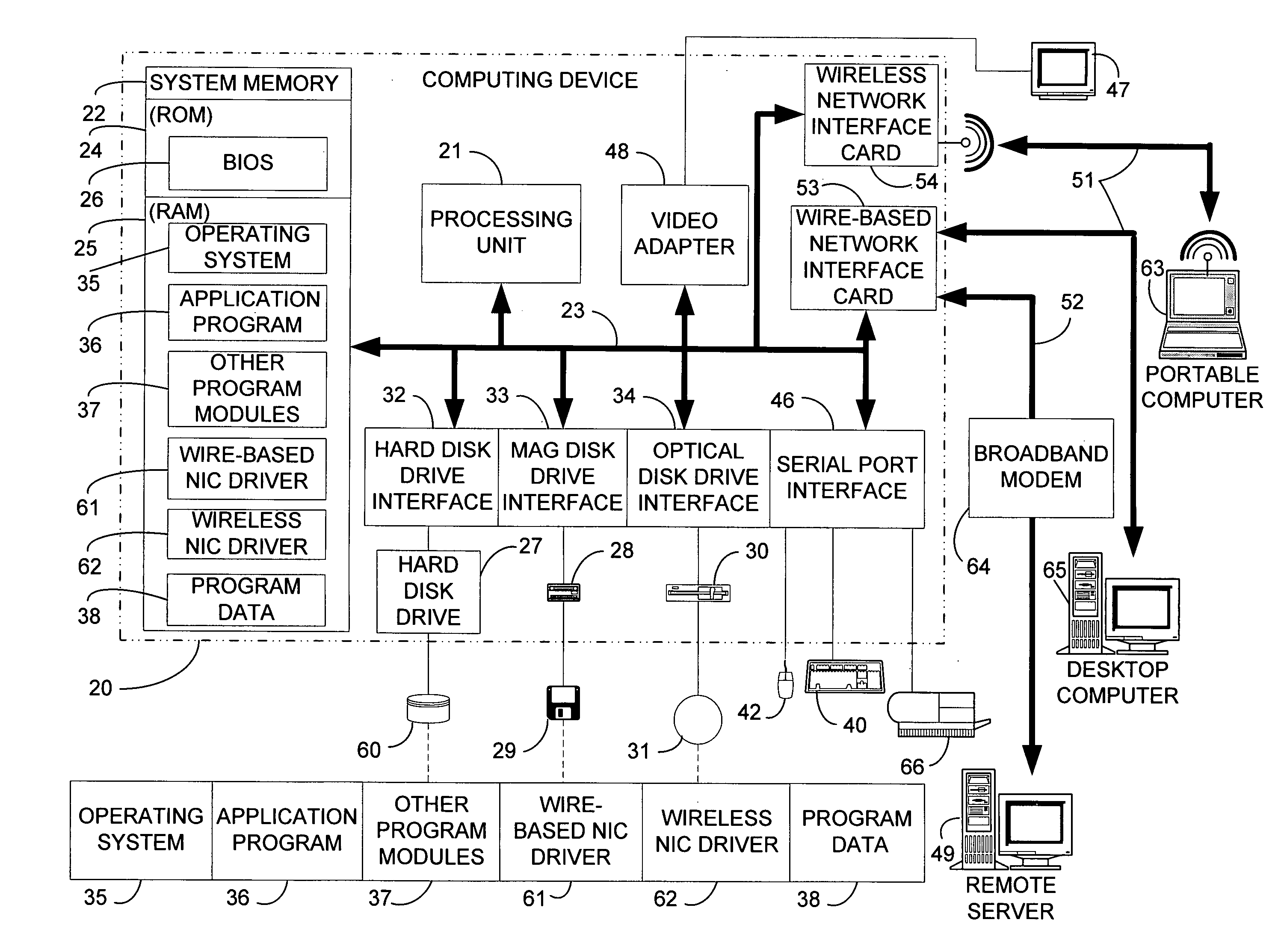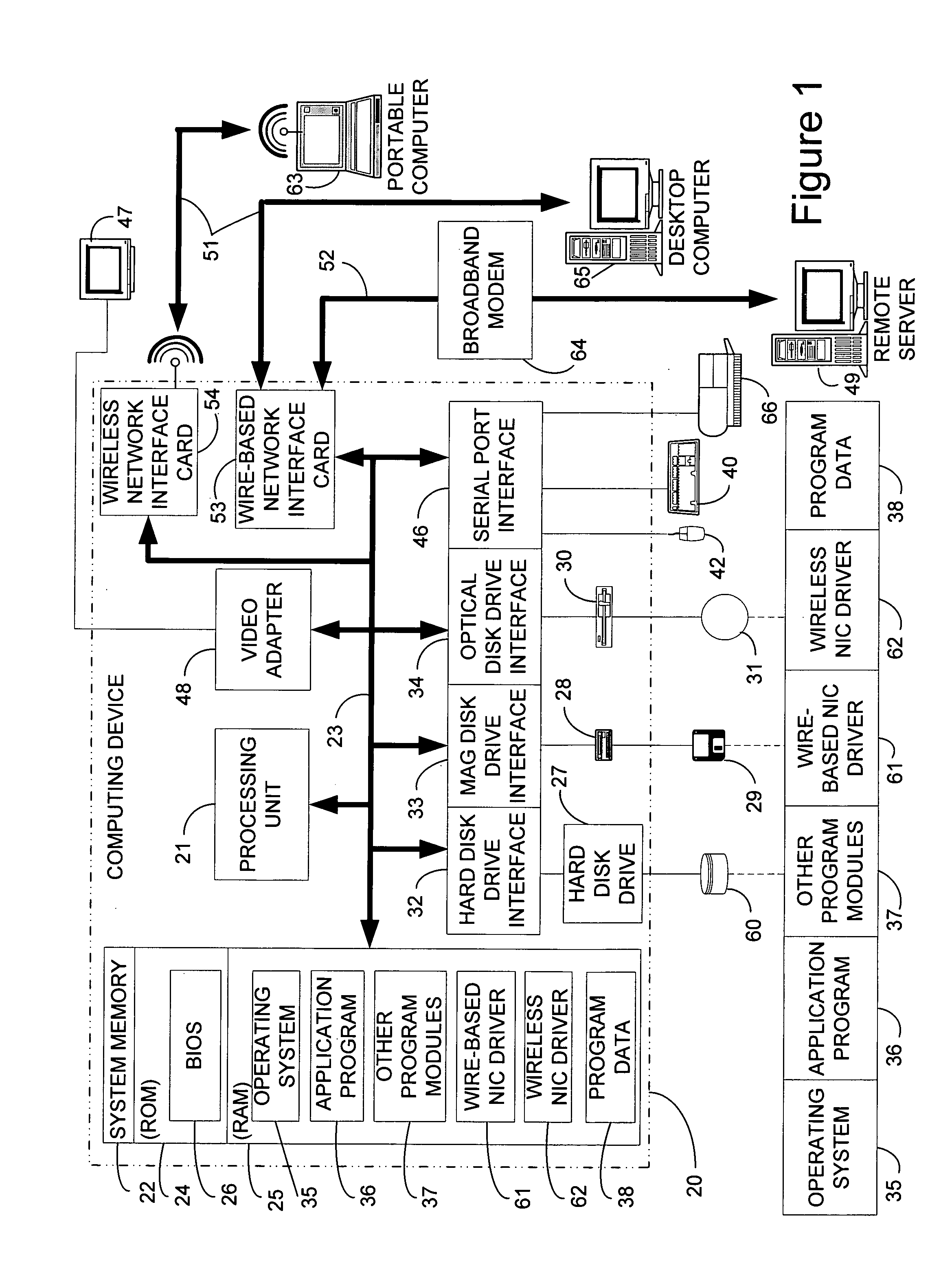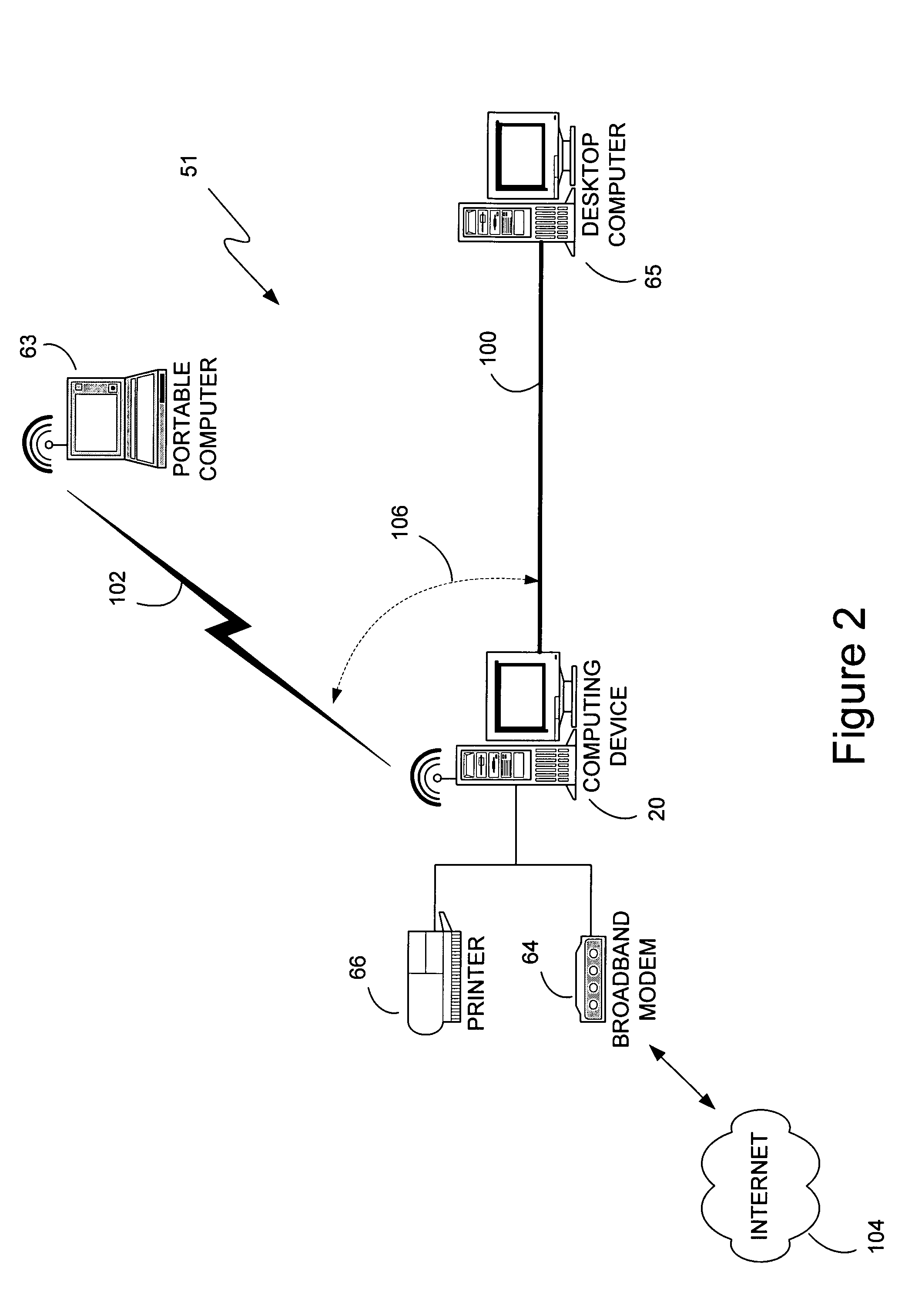Exposing multiple network interfaces as a single network interface to a higher level networking software
a network interface and networking software technology, applied in the field of computer networks, can solve the problems of not upgrading, printers that have not experienced such dramatic improvements, and information sharing between the computers becomes more problematic, so as to increase the overall consumption of memory, and increase the cost of copying
- Summary
- Abstract
- Description
- Claims
- Application Information
AI Technical Summary
Benefits of technology
Problems solved by technology
Method used
Image
Examples
Embodiment Construction
[0028]Turning to the drawings, wherein like reference numerals refer to like elements, the invention is described hereinafter in the context of a computing environment. As will be described in detail below and with reference to the attached drawings, the invention is a software network bridge which exposes the network segments as a single network unit to the host computer, implements a software bridge conforming with the Spanning Tree Algorithm, allows for the same data to be sent to multiple network segments simultaneously, assigns buffer space using a dynamic memory allocation scheme, and provides for efficient initial analysis and queuing of incoming packets. Although it is not required for practicing the invention, the invention is described as it can be implemented by computer-executable instructions, such as program modules, that are executed by a computing device. Generally, program modules include routines, programs, objects, components, data structures and the like that per...
PUM
 Login to View More
Login to View More Abstract
Description
Claims
Application Information
 Login to View More
Login to View More - R&D
- Intellectual Property
- Life Sciences
- Materials
- Tech Scout
- Unparalleled Data Quality
- Higher Quality Content
- 60% Fewer Hallucinations
Browse by: Latest US Patents, China's latest patents, Technical Efficacy Thesaurus, Application Domain, Technology Topic, Popular Technical Reports.
© 2025 PatSnap. All rights reserved.Legal|Privacy policy|Modern Slavery Act Transparency Statement|Sitemap|About US| Contact US: help@patsnap.com



